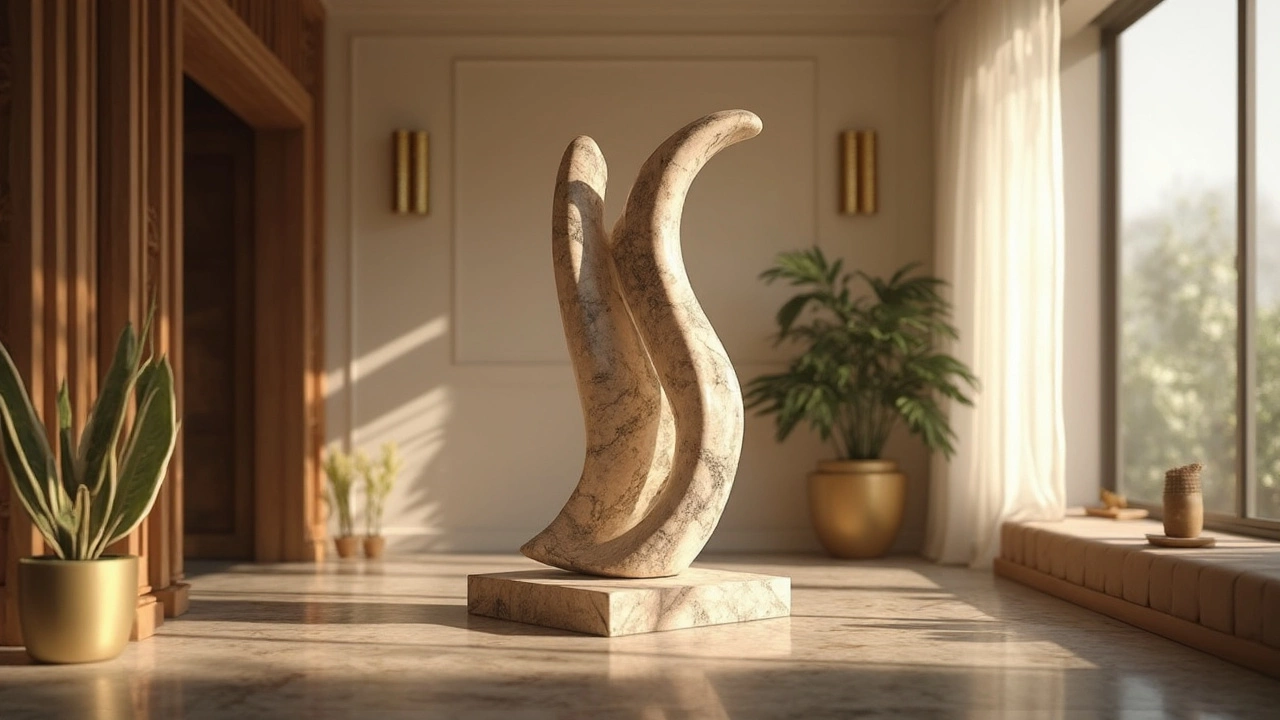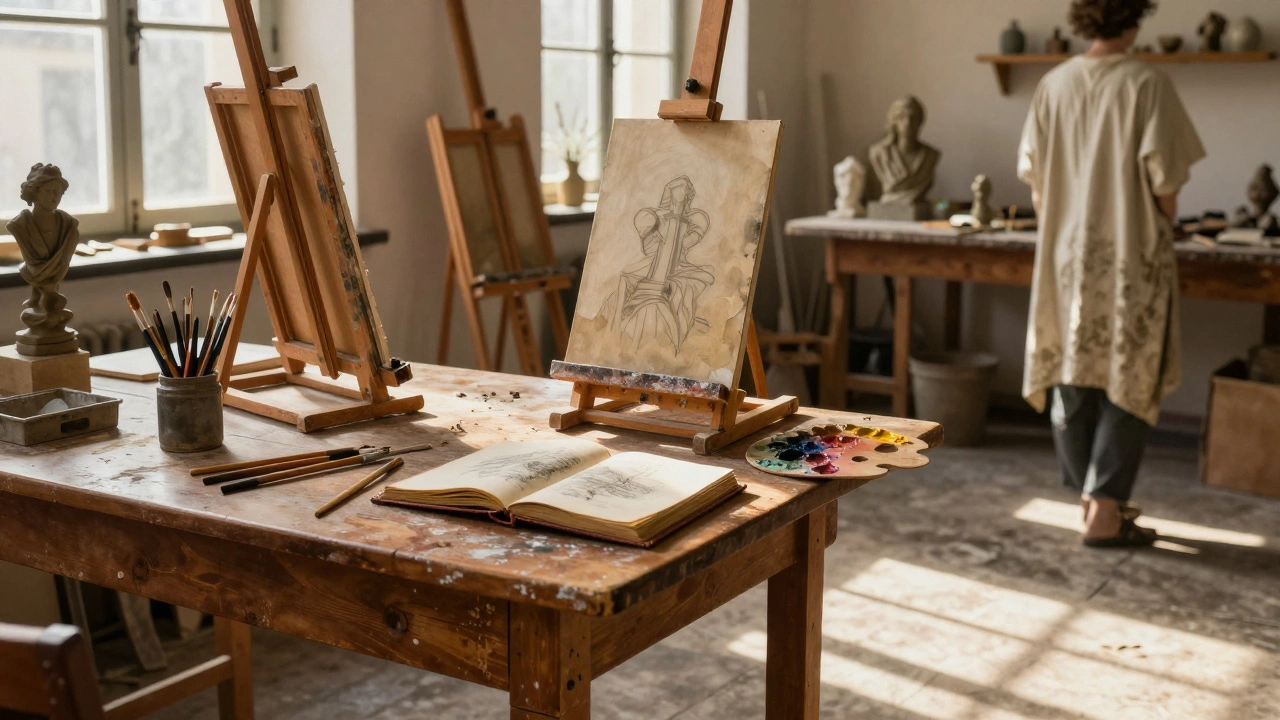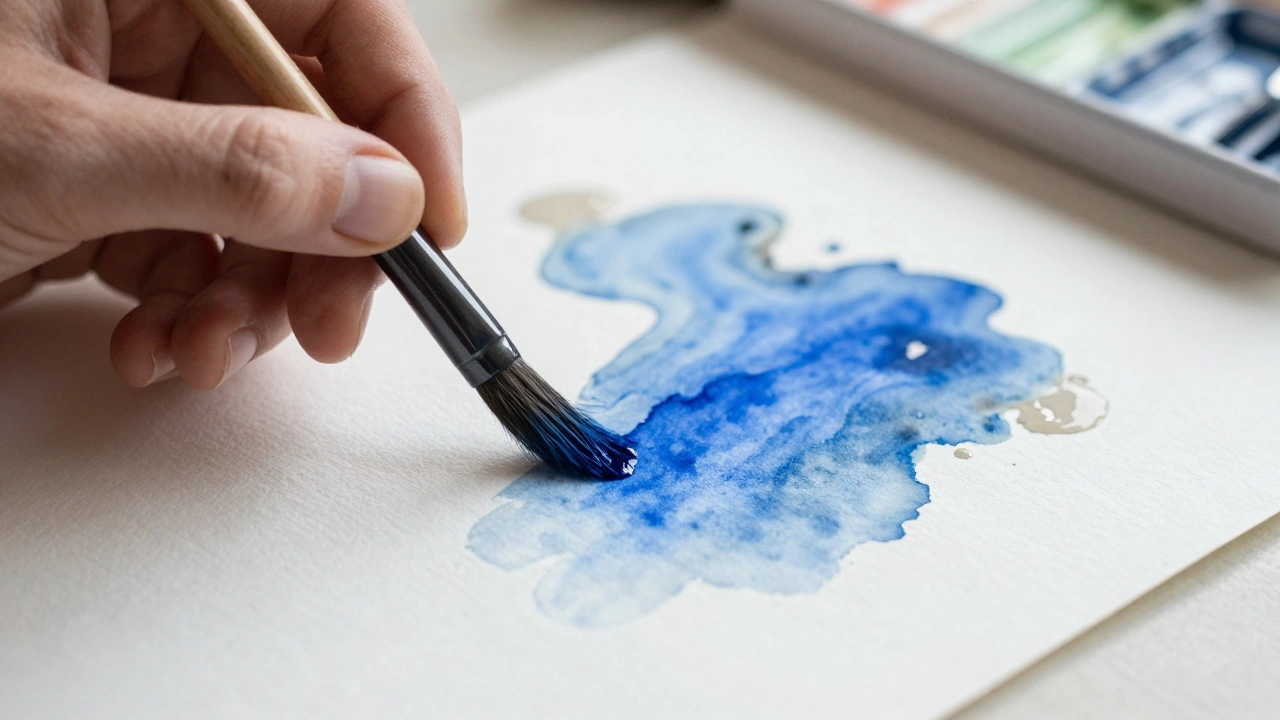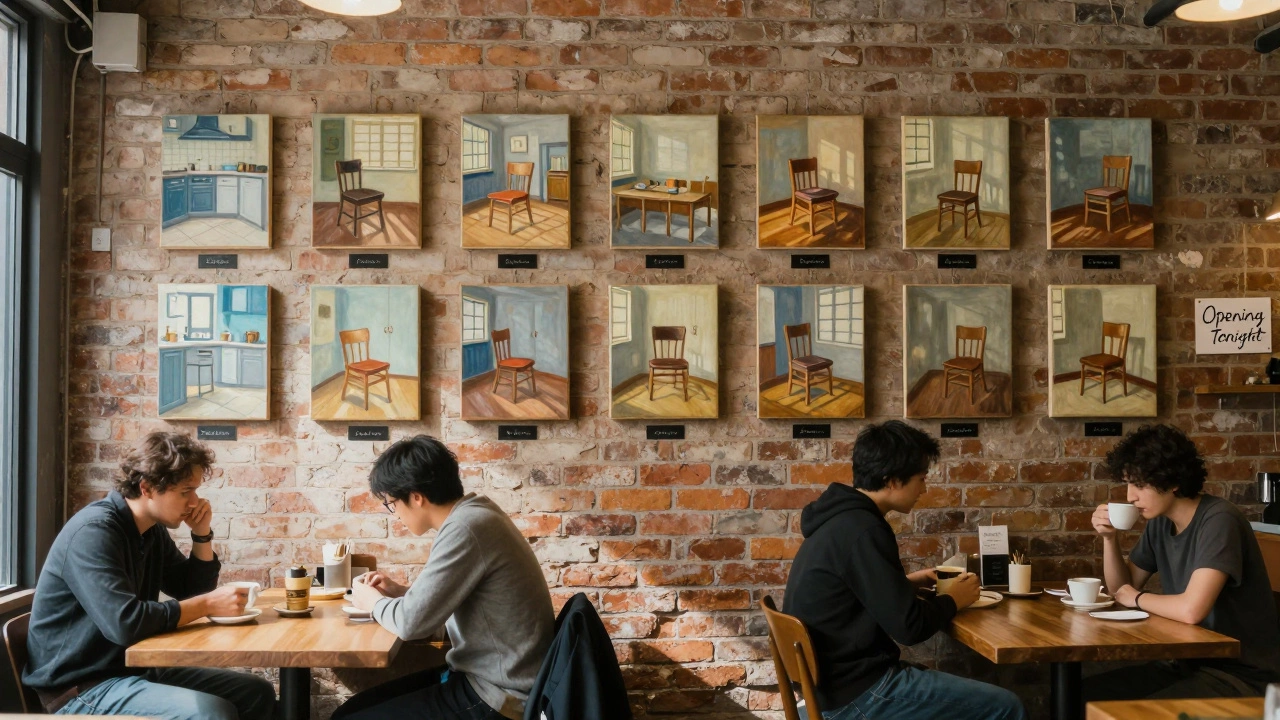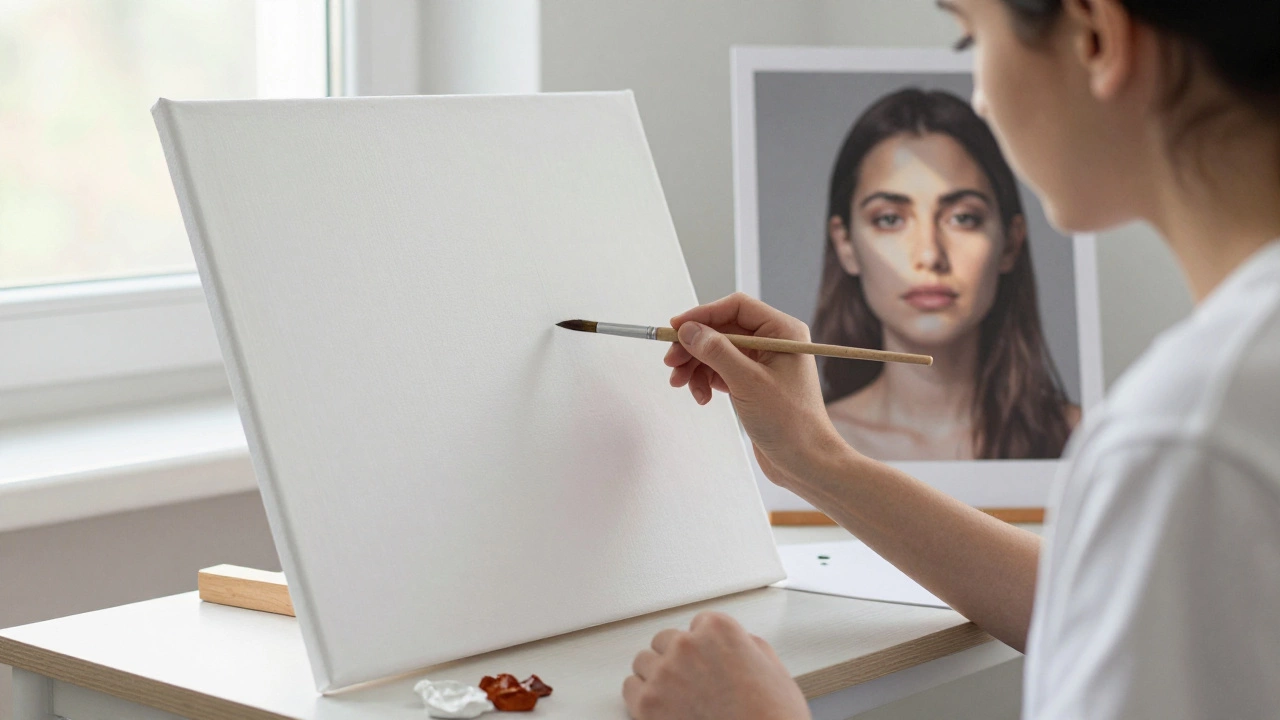When you bring a sculpture into a room, you’re not just picking a spot and hoping for the best. Get this part wrong, and even the most epic piece can blend into the background, ignored by everyone. Nailing the right display is all about two things: lighting and placement. Mess one of these up, and you’ll never see the work at its best.
Let’s start with lighting. It’s not just about turning on a bright lamp. The angle, type, and strength of light change how the sculpture looks—sometimes completely. Ever noticed how professional galleries often use side lighting? That’s because it pulls out textures and shadows, making details pop. Put a single light right above, and suddenly that same sculpture looks flat and lifeless. Even the color of your light bulb can mess with the mood. Warm light can soften harsh edges, while cold light can make things look sharper or a bit sterile.
- Lighting: More Than Just Brightness
- Placement and Viewing Angles
- Common Mistakes to Avoid
- Quick Tips for Every Space
Lighting: More Than Just Brightness
Lighting does way more than just help you see a sculpture. It can turn something amazing into a total dud or make an average piece look incredible. You can’t just stick a lamp nearby and call it a day. The way light hits a sculpture changes the whole feel, from highlighting cool textures to casting shadows that make shapes stand out.
Most professional galleries mix up their lighting. Why? Because different types of light bring out different details. For smaller sculptures, LED spotlights work well since they don’t overheat. For bigger pieces, people usually go with track lighting so you can adjust angles easily. And here’s a fact: a 2023 study by Museum Lighting Institute found that over 70% of viewers noticed more detail when sculptures were shown with angled lighting instead of overhead lights.
- Side lighting pumps up shadows and makes surfaces look more dynamic.
- Lighting from below? That’s usually not a great idea—it distorts the features and feels a bit horror-movie.
- Natural sunlight can be cool, but remember, some materials – like wood or certain plastics – can fade or crack if left in direct sun for a long time.
- Dim corners make details fade. Brighter isn’t always better, but consistent brightness helps visitors get the full picture.
- Try out different colored bulbs—warmer ones are good for metal and clay, while cool white might bring out texture in stone or glass.
Check out this quick comparison:
| Lighting Type | Best For | Potential Issues |
|---|---|---|
| LED Spotlights | Small sculptures, indoor displays | Can feel harsh if not aimed right |
| Track Lighting | Gallery spaces, larger pieces | Needs effort to set up angles |
| Natural Light | Temporary shows, organic materials | Fading, heat damage, changing intensity |
Bottom line: don’t sleep on lighting. Picking the right setup for your sculpture display makes all the difference. Test out a few setups before settling, and always look at your sculpture at different times of the day to check for surprises.
Placement and Viewing Angles
If you want your sculpture to stand out, nail the placement and don’t just dump it somewhere random. Where you put your sculpture and how people can walk around or see it from different sides changes everything. Forgetting this is like hanging a painting in a hallway with no light—you’re just setting yourself up for disappointment.
Start by thinking about where people's eyes naturally go when they enter the room. Museums frequently place sculptures right at eye level or just below, because studies show most folks connect best with art when it’s between 57 and 60 inches from the floor. That sweet spot lets people take in all the details without having to crouch or crane their necks.
But here’s the real trick: always consider how the piece looks from different angles. A lot of sculptures are made to be viewed from all sides, so cramming one up against a wall kills half the magic. If you have the space, try putting your piece on a pedestal or a stand out in the open. A round pedestal works great, so people can walk around without bumping into edges.
- Leave at least two feet of breathing room around the sculpture if you can. Crowding it with furniture or putting it next to busy décor just distracts the eye.
- Think about the main approach: How do people enter the space? Put the sculpture where it grabs attention, like right in a sightline by a doorway or at the end of a hallway, so it naturally pulls people in.
- Don’t be afraid to move things and test out new spots. Even professional curators move their displays around to catch light or find a new vibe.
If you’re displaying more than one sculpture, group them at different heights. Straight lines or grids tend to look stiff; a little stagger and space lets each piece breathe. And remember, viewing a sculpture in person is all about the experience—make it easy for people to walk around, bend down, or get close without feeling awkward.
So, when you’re working on your sculpture display, think about flow, view, and how people interact with art. The best spots let the art speak for itself while inviting people to come in for a closer look.

Common Mistakes to Avoid
Even seasoned pros slip up sometimes when it comes to sculpture display. Certain blunders pop up again and again, and some can totally wreck a great piece. Avoid these, and you’re already ahead of the game.
- Sculpture display isn’t just about putting the piece anywhere there’s space. Shoving it too close to a wall or in a crowded area means people can’t see it from all sides. Worse, they might bump into it—or not want to come near for fear of knocking it over.
- Lighting from only above—or worse, backlighting it—flattens every detail you want people to notice. Art museums usually use a combo of side and slightly top-down lights for a reason. It brings out depth and shape without those odd shadows or discomfort-glare.
- Ignoring scale is a rookie mistake. A small scuplture on a huge pedestal gets lost. A giant piece on a tiny stand looks like a circus act. The stand should feel balanced with your piece.
- Don’t forget safety. Make sure stands and pedestals are sturdy. According to the UK’s Association of Independent Museums, accidental sculpture damage spikes when stands are unstable or too lightweight for the artwork. Nobody wants to see a favorite piece go down.
- Skipping environmental checks is risky. Humidity and direct sun can warp or fade certain materials. Quick tip: plaster and wood need drier conditions, and bronze prefers it not be too damp.
| Mistake | Why It's Bad | Quick Fix |
|---|---|---|
| No space around sculpture | Limits viewing angles, risks bumping | Leave at least 2 feet of space all sides |
| Single light source | Flattens details, causes shadows | Use multiple light angles |
| Wrong size stand | Feels off-balance, distracts | Choose stand about 1/3 the sculpture's height |
| Ignoring material needs | Causes damage over time | Check art material care guides |
So before you show off that next piece, double check for these troublemakers. Fixing even one can make your sculpture stand out way more than before.
Quick Tips for Every Space
Not every space is a fancy gallery, but you can still get a killer display by following some easy tricks that work anywhere. Whether you’re working with a small apartment shelf or setting up in a school hallway, these tips keep your sculpture center stage.
- Keep the background simple. A plain wall or shelf lets the sculpture stand out. If the background is too busy, people notice everything except the art.
- Always check the height. Gallery pros often set the midpoint of a sculpture about 59 inches off the ground—close to average eye level. This isn’t just a random number; it’s based on what’s most comfortable for most people.
- Don’t cram sculptures together. If you have multiple pieces, leave space between them. Museum guidelines suggest at least 24 inches around each work when possible—nothing feels great when it has elbows in its face.
- Mood lighting changes everything. Try out different lamps and angles. If you’re showing something in the evening, add a light source from the side to boost shadows and highlights.
- Protect it, but don’t hide it. Transparent display cases are awesome for fragile or delicate pieces. Use clear acrylic over glass for less glare and better safety.
- Check what’s underfoot. A light-colored plinth (that’s art speak for pedestal) can give heavy, dark sculptures a lift. Black stands work the other way—making bright or shiny sculptures stand out more.
Here's a quick cheat sheet for common spots where people show art:
| Location | Best Light | Suggested Height | Special Tip |
|---|---|---|---|
| Living Room | Soft daylight, side lamp | Mid-eye-level (approx. 59 in. from floor) | Rotate piece every few weeks for fresh perspective |
| Office Desk | LED, indirect | Just above paperwork level | Go for compact, non-distracting pieces |
| Hallway | Track lighting | Same as gallery: midpoint 59 in. | Add wall labels so people know what they’re seeing |
| Outdoor Patio | Natural light, avoid midday sun | Low plinth for stability | Consider weather-proof coatings |
No matter where you set up, the real trick with sculpture display is staying intentional. Move things, swap out lighting, and don’t be afraid to try stuff. Even pros experiment to make a good piece look epic.
